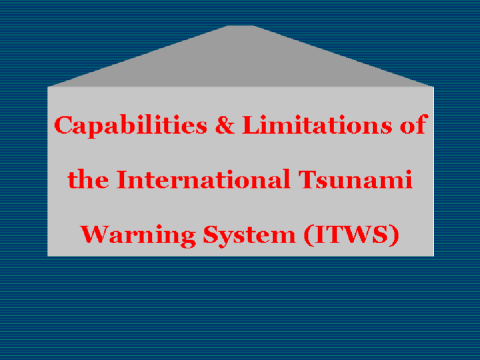| front |1 |2 |3 |4 |5 |6 |7 |8 |9 |10 |11 |12 |13 |14 |15 |16 |17 |18 |19 |20 |21 |22 |23 |24 |25 |26 |27 |28 |29 |30 |31 |32 |33 |34 |35 |36 |37 |38 |39 |40 |41 |42 |43 |44 |45 |46 |47 |48 |review |
 |
In the deep ocean the
tsunami speed may exceed 600 km/s; thus, the need for rapid data handling
and communication becomes obvious. Because of the time spent in collecting
seismic and tidal data, the warnings issued by PTWC and ATWC (headquarters
for international warnings) cannot protect areas against local tsunamis in
the first hour after generation; for this purpose, regional warning systems
have been established in some areas. The regional systems generally have data from a number of seismic and
tide stations telemetered to a central headquarters. Nearby earthquakes are
located, usually in 15 minutes or less, and a warning based on
seismological evidence is released to the population of the area. Since the
warning is issued on the basis of seismic data alone, watches or even
warnings will occasionally be issued when tsunamis have not been generated.
Since they are issued only to restricted area and confirmation of the
existence or nonexistence of a tsunami is rapidly obtained, dislocations of
populations are minimized. To limit the number of agencies to be contacted,
warnings are generally issued to only one agency in each country, territory,
or administrative area.
|